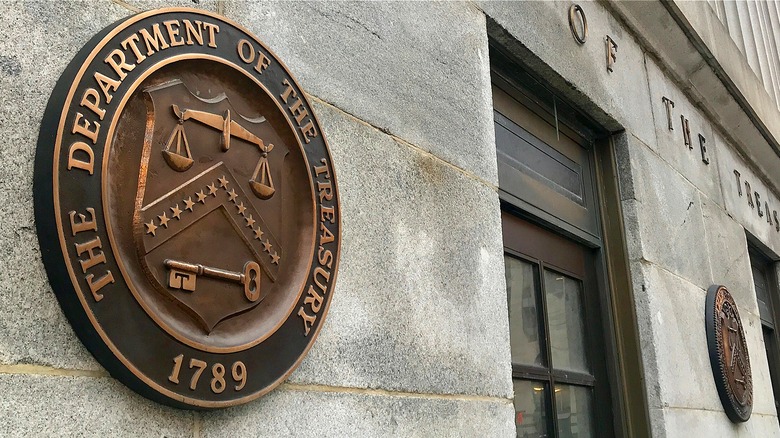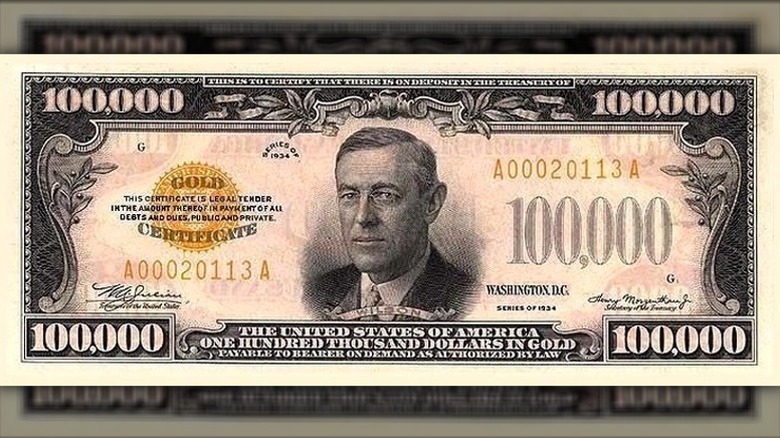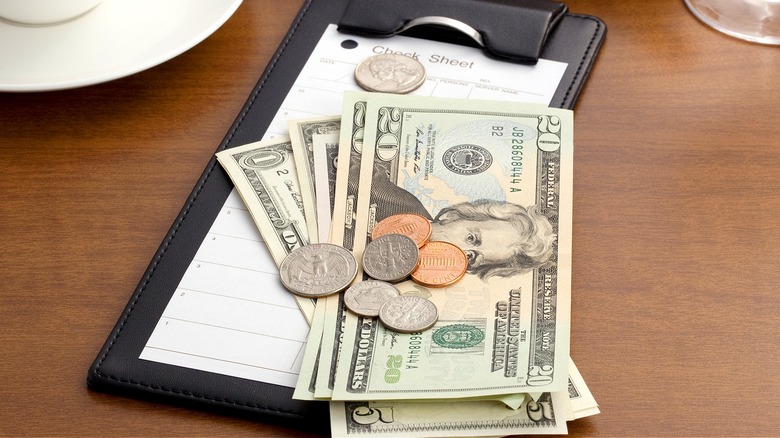The Unexpected Value Of The $100,000 Bill Today
The $100,000 bill. Think of it: If you were to hold 10 of these in your hand, you'd be holding $1 million. The denomination seems unreal, like something out of a board game or a movie. But, in fact, the United States once printed this bank note and, unsurprisingly, it was the highest denomination ever issued by the U.S. federal government. The $100,000 bill was printed for 21 days between 1934 and 1935, and it was never meant for public circulation. So, it's super rare, right? You'd think the value of one of these $100,000 notes today would be worth far more than the value printed on the bill, but you'd be mistaken.
In fact, the $100,000 bill basically carries no value, as it's illegal for a private individual to own it. Meaning, not only would you not be able to sell or auction it off for profit, but you could face serious legal consequences for possessing it. Today, the only way to see a $100,000 bill is to visit a museum; specifically, the Smithsonian Institution's National Museum of American History, where the bank note is part of the exhibition "The Value of Money."
When the $100,000 bill was printed
The $100,000 bill may not hold monetary value, but its role in U.S. history is perfectly interesting. The bank note, which featured a portrait of President Woodrow Wilson on the front, was orange on its reverse. The back of the bill read "$100,000" in the center, with rays radiating out from it, along with the words "The United States of America" at the top and "One Hundred Thousand Dollars" at the bottom. It looked like a note ready for circulation but, as said, it was never meant to be held by the public. So, what was its purpose?
The $100,000 bill was actually used by the Federal Reserve Banks for accounting, and per the Bureau of Engraving & Printing, it was only issued "against an equal amount of gold bullion held by the Treasury." (Perhaps easier to exchange one $100,000 bill than, say, 1,000 $100 bills). As for its printing, the note was only printed for 21 days, from December 18, 1934, through January 9, 1935. And, while we call it a $100,000 bill, its official name is the "$100,000 Gold Certificate, Series 1934."
A $100,000 bill would be impractical to use
Based on the fate of other U.S. currency with high values — i.e., the $500 bill, $1,000 bill, $5,000 bill, and $10,000 bill — had the $100,000 bill been issued for public circulation, it likely would've been discontinued from lack of use. Even the smaller big bills, like the $500 bill, phased out once it was clear too few people would ever need such a high denomination. These big, impractical bank notes were all discontinued on July 14, 1969.
That being said, had the $100,000 bill ever been legal tender, it would surely be collectible today. Although its buying power in 2023 would equal $2,326,143.94, per the Bureau of Labor Statistics' Consumer Price Index calculator, one could only guess how much a $100,000 bill could sell for. To get an idea, we can take a look at the sale of other rare denominations. The $500 bill, for example, last printed in 1945 but issued until 1969, has easily gone for four to five times its face value (via Collectibles & Currency). The $1,000 bill, meanwhile, has similarly sold at three to four times its value.


